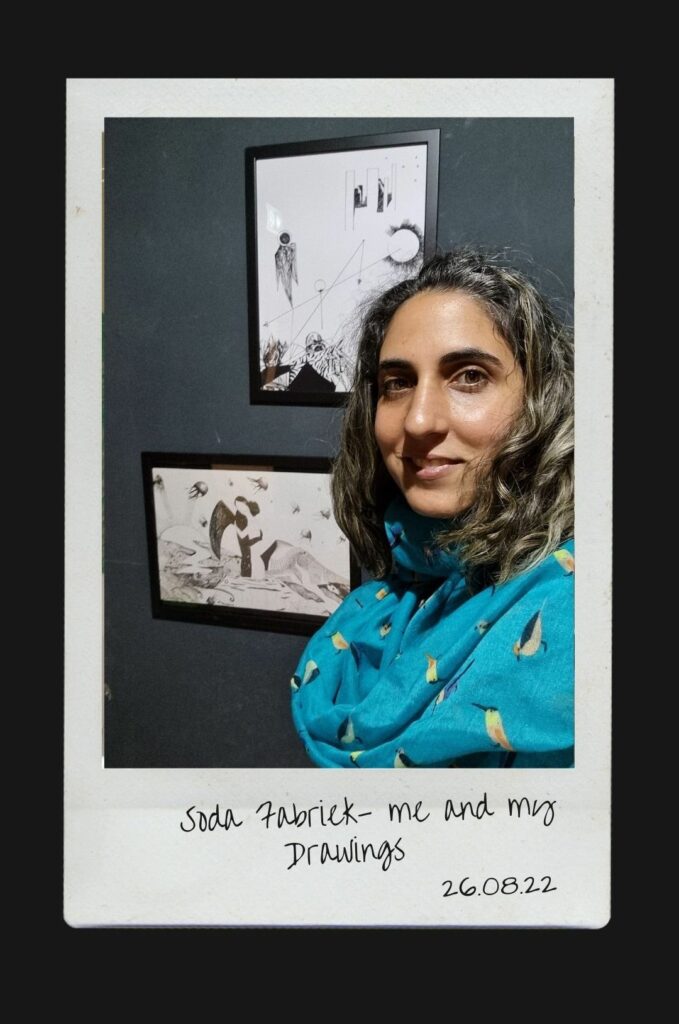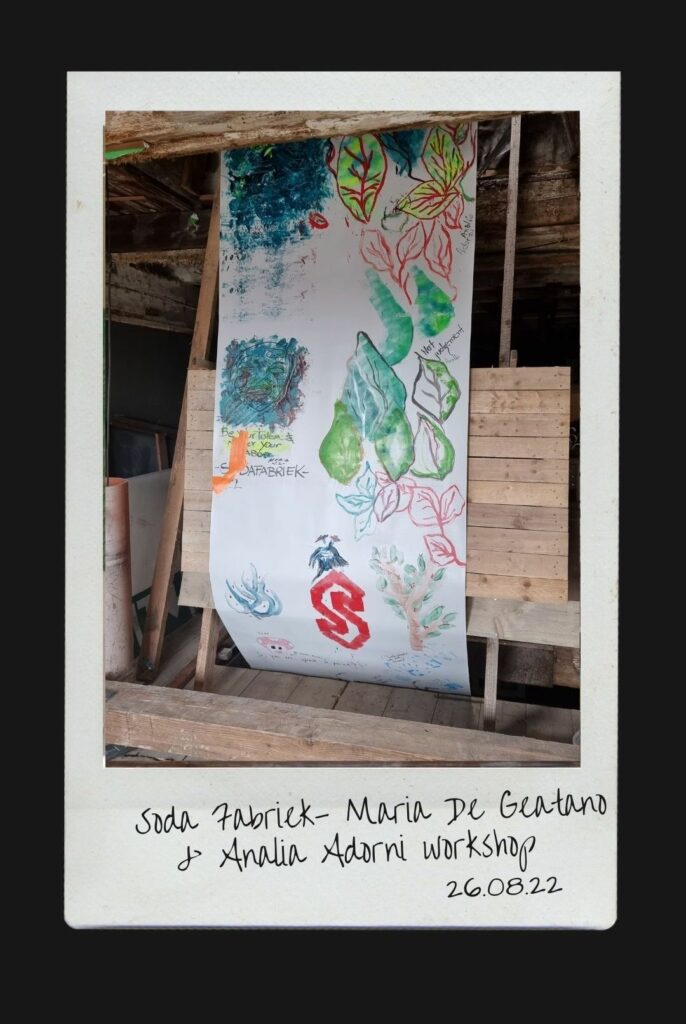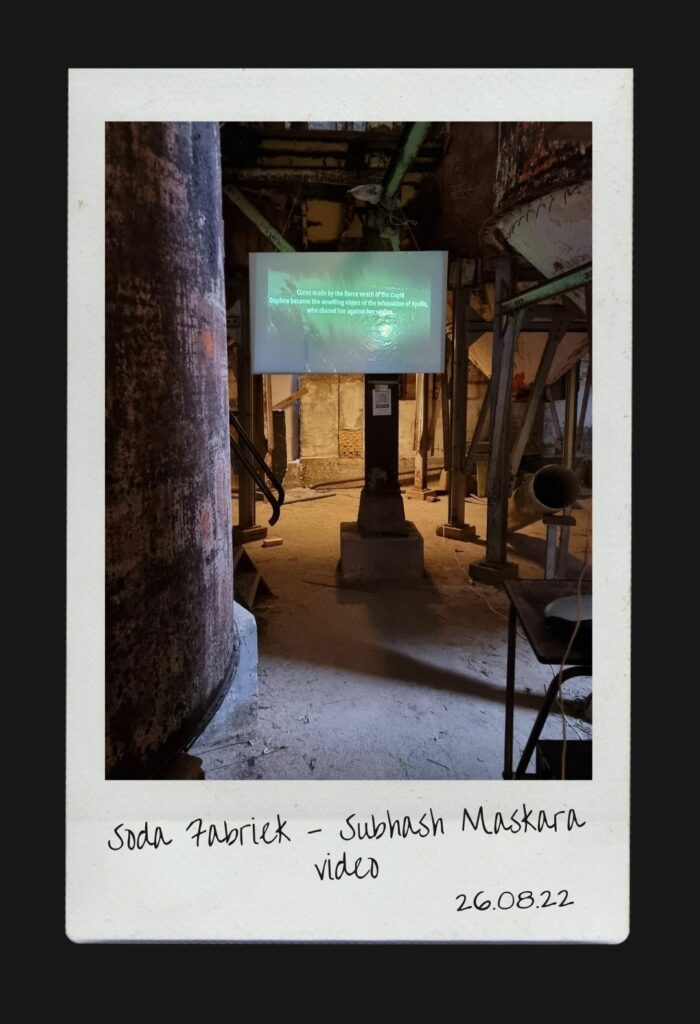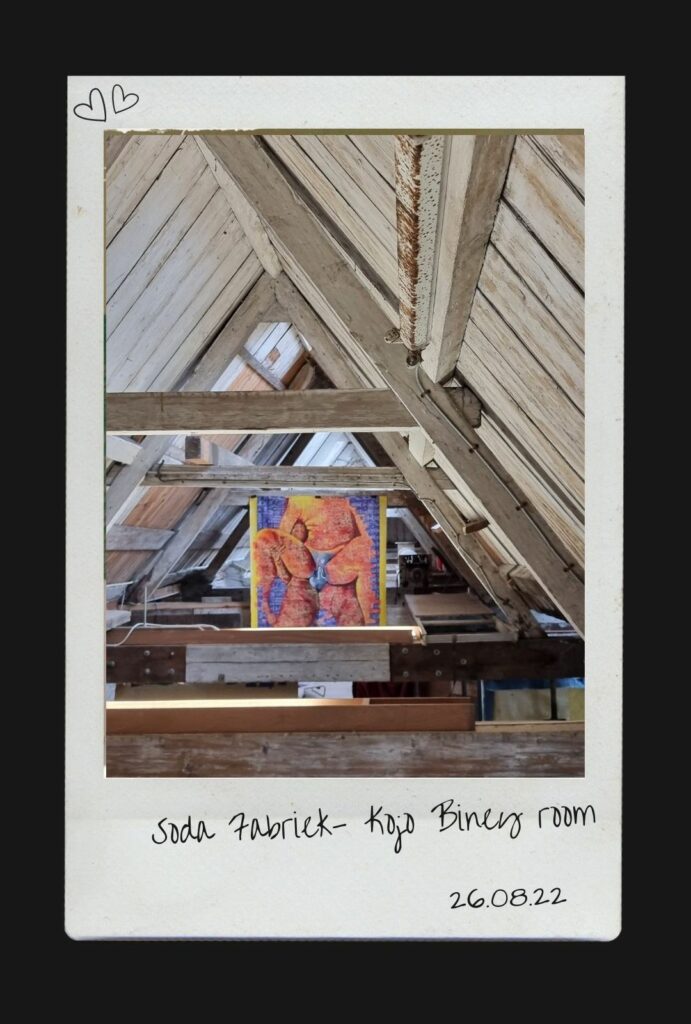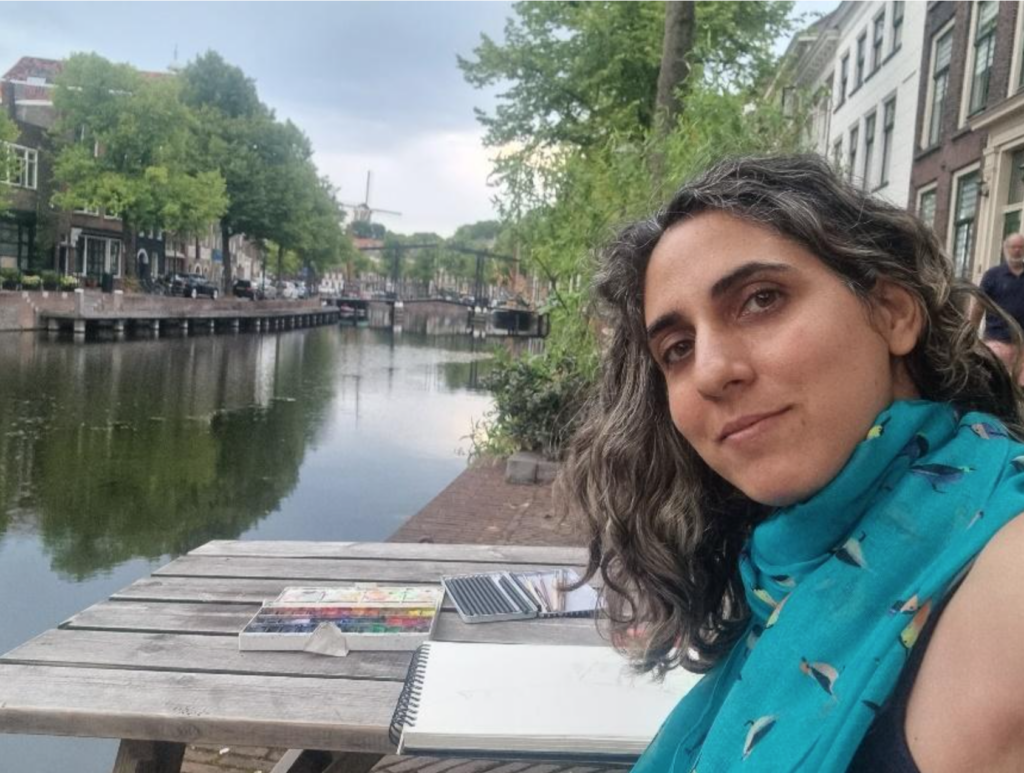‘Beating the Odds: 36 hours of Art in Schiedam, Netherlands’ – Part 2 – An adventure by Einat Moglad
We continue with Einat Moglad’s travel essay, picking up where we left off last week. In Part 2, she describes SodaFabriek, its architecture, history, and her experiences with the Bookmark Art Collective’s (BAC) ‘Magic Mirror’ exhibition on view there in July.
Soda Fabriek - A Place for Dreamers
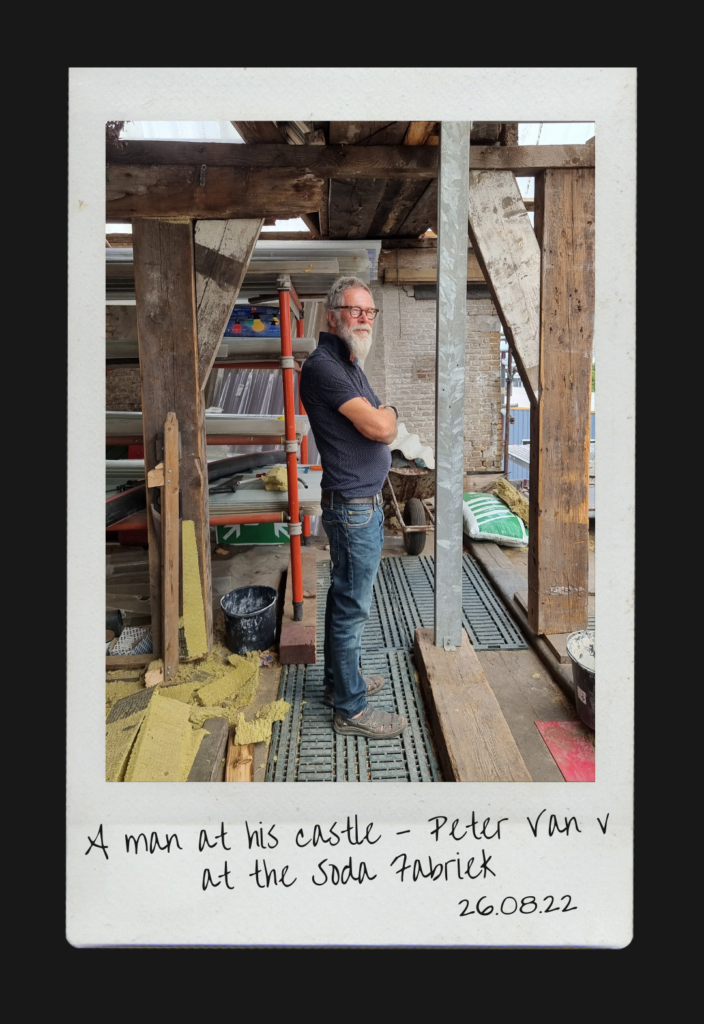 I had a wonderful day with Peter van Velzen at SodaFabriek in Schiedam, Netherlands. It was a nice opportunity to get to know him. I knew that Peter was an architect, but through an in-depth conversation with him, I learned that he specializes in preserving buildings. He had helped different businesses renovate old buildings and worked in city hall, issuing permits and making sure buildings were well preserved. After many years of helping others to take care of old buildings, it seemed only natural that he would wish to renovate a building of his own. When the possibility to purchase the SodaFabriek building arose, Peter offered city hall a vision to create an artistic space for the community. SodaFabriek was originally an old gin factory but through Peter’s efforts, it was converted into a lively not-for-profit establishment for many different creative uses.
I had a wonderful day with Peter van Velzen at SodaFabriek in Schiedam, Netherlands. It was a nice opportunity to get to know him. I knew that Peter was an architect, but through an in-depth conversation with him, I learned that he specializes in preserving buildings. He had helped different businesses renovate old buildings and worked in city hall, issuing permits and making sure buildings were well preserved. After many years of helping others to take care of old buildings, it seemed only natural that he would wish to renovate a building of his own. When the possibility to purchase the SodaFabriek building arose, Peter offered city hall a vision to create an artistic space for the community. SodaFabriek was originally an old gin factory but through Peter’s efforts, it was converted into a lively not-for-profit establishment for many different creative uses.
It wasn’t much of a surprise that such a positive and open-minded approach to the arts found its way to the artists of BAC. It seems that both the spirit of the collective and that of SodaFabriek were meant to be together.
SodaFabriek was definitely the highlight of my trip. This was my last chance to view, in person, the “Magic Mirror” exhibition I worked so hard on. Curating this show remotely was quite a challenge, working through local proxies such as Art and Peter. Coming here to the live exhibition in SodaFabriek was terribly exciting as I was about to meet in person what was for me, thus far, only an online experience.
As I entered the SodaFabriek, and the BAC exhibit engaging the theme of spirituality, I found myself in front of a large scrolling paper with the invitation to add my mark to it, as all past visitors had done before me. I saw in this paper the traces of a past workshop held by Maria Di Gaetano & Analia Adorni. This was a welcoming way to have every visitor become a part of the show, to create and explore.
As I entered the first space, I could see Subhash Maskara’s video and music echoing throughout the space. The music created an enveloping sensation that matched the rusty domain of the space. Sound, all on its own, is an interesting element in the transference from online to the real world. Sound can hold a significant impact on a visitor. It feels as though you are deepening yourself in a pond of music. The music colors your sensations toward the space. The feeling of sound can hardly be captured in photos or words, and it’s my most memorable experience from the show. Sound is art that goes beneath the skin.
SodaFabriek, as mentioned, is an old gin factory. It was important for Peter to maintain some of the factory’s old rustic charm while keeping the building atmosphere as a playground for creativity. The renovation and restoration efforts maintain a tension of being touched and untouched at the same time. A lot of the building’s original structure, tools, and elements remain present in the different rooms. Among those elements are big tanks of gin that were transformed into places for sitting and observing the artworks and videos.
Sitting inside these round iron containers is an experience of its own and is substantially different from the “white cube” presentations of art that we are used to. In one of those containers, I watched Anirban Mishra’s circling animations. When one sits in this round container, it feels like going back into the womb. This video womb became an interesting landmark in the show as it offered an experience of wholeness.
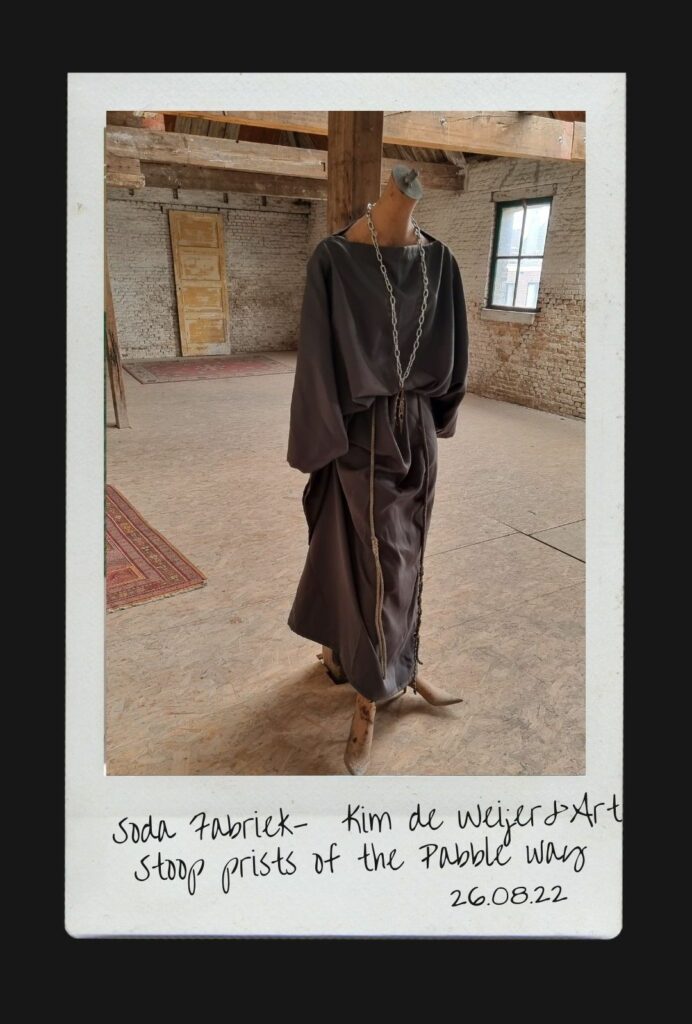 The show felt more like a journey than just an exhibition. Throughout the exhibit, I was able to walk from one space to the next, crossing corridors and containers, and going up and down the stairs. I watched art from up close or at a distance. I walked through a “forest” of paintings, such as Kojo Binay’s installation room, and observed from afar, art such as Nino Kundadze’s work. I had an intimate encounter with Fitz Simmon’s piece that was lurking in a corner. The art felt not so much like an exhibition, but like a path one takes. I didn’t expect this feeling during my online curatorial work with Art and Peter.
The show felt more like a journey than just an exhibition. Throughout the exhibit, I was able to walk from one space to the next, crossing corridors and containers, and going up and down the stairs. I watched art from up close or at a distance. I walked through a “forest” of paintings, such as Kojo Binay’s installation room, and observed from afar, art such as Nino Kundadze’s work. I had an intimate encounter with Fitz Simmon’s piece that was lurking in a corner. The art felt not so much like an exhibition, but like a path one takes. I didn’t expect this feeling during my online curatorial work with Art and Peter.
This journey in the SodaFabriek space got me thinking a lot about the differences between online and offline experiences as well as the technological aspects of the experience. Much like Schiedam’s Stedelijk Museum, it seems that technology is here as part of our artistic experiences. Still, I am here in Schiedam in person because there is a sensual element in experiencing things firsthand. Technology can’t yet feed all the senses. Our body is the traveler, the witness, the player in the game. We still can’t fully replace the experience of “being there” with online activities.
We still need to take the voyage in person wherever it may take us – in art and in life. Dealing with uncertainty as this little “adventure “taught me is that the only certainty you can have in life is to trust that the voyage will take you where you need to go – wherever that may be.
